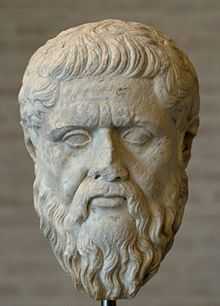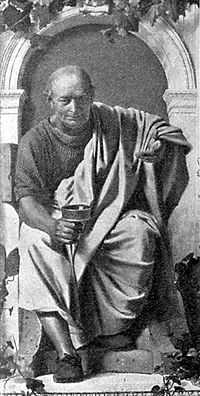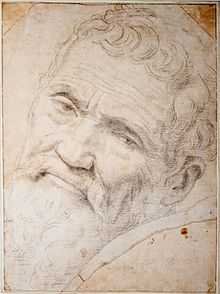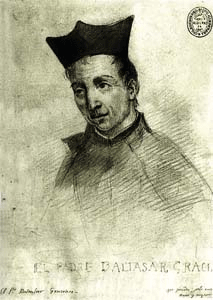History of the concept of creativity
The ways in which societies have perceived the concept of creativity have changed throughout history, as has the term itself. The ancient Greek concept of art (in Greek, "techne" — the root of "technique" and "technology"), with the exception of poetry, involved not freedom of action but subjection to rules. In Rome, the Greek concept was partly shaken, and visual artists were viewed as sharing, with poets, imagination and inspiration.
Under medieval Christianity, the Latin "creatio" came to designate God's act of "creatio ex nihilo" ("creation from nothing"); thus "creatio" ceased to apply to human activities. The Middle Ages, however, went even further than antiquity, when they revoked poetry's exceptional status: it, too, was an art and therefore craft and not creativity.
Renaissance men sought to give voice to their sense of their freedom and creativity. The first to apply the word "creativity," however, was the 17th-century Polish poet Maciej Kazimierz Sarbiewski — but he applied it only to poetry. For over a century and a half, the idea of human creativity met with resistance, because the term "creation" was reserved for creation "from nothing."
In the 19th century, art took its revenge: now not only was art recognized as creativity, but it alone was. When later, at the turn of the 20th century, there began to be discussion as well of creativity in the sciences and in nature, this was taken as the transference, to the sciences and to nature, of concepts that were proper to art.
Term and concept
The ancient Greeks had no terms corresponding to "to create" or "creator." The expression "poiein" ("to make") sufficed. And even that was not extended to art in general, but only to poiesis (poetry) and to the poietes (poet, or "maker") who made it. Plato asks in The Republic, "Will we say, of a painter, that he makes something?" and answers, "Certainly not, he merely imitates." To the ancient Greeks, the concept of a creator and of creativity implied freedom of action, whereas the Greeks' concept of art involved subjection to laws and rules. Art (in Greek, "techne") was "the making of things, according to rules." It contained no creativity, and it would have been — in the Greeks' view — a bad state of affairs if it had.[1]
This understanding of art had a distinct premise: Nature is perfect and is subject to laws, therefore man ought to discover its laws and submit to them, and not seek freedom, which will deflect him from that optimum which he can attain. The artist was a discoverer, not an inventor.[2]
The sole exception to this Greek view — a great exception — was poetry. The poet made new things — brought to life a new world — while the artist merely imitated. And the poet, unlike the artist, was not bound by laws. There were no terms corresponding to "creativity" or "creator," but in reality the poet was understood to be one who creates. And only he was so understood. In music, there was no freedom: melodies were prescribed, particularly for ceremonies and entertainments, and were known tellingly as "nomoi" ("laws"). In the visual arts, freedom was limited by the proportions that Polyclitus had established for the human frame, and which he called "the canon" (meaning, "measure"). Plato argued in Timaeus that, to execute a good work, one must contemplate an eternal model. Later the Roman, Cicero, would write that art embraces those things "of which we have knowledge" ("quae sciuntur").[2]
Poets saw things differently. Book I of the Odyssey asks, "Why forbid the singer to please us with singing as he himself will?" Aristotle had doubts as to whether poetry was imitation of reality, and as to whether it required adherence to truth: it was, rather, the realm of that "which is neither true nor false."[3]
In Rome, these Greek concepts were partly shaken. Horace wrote that not only poets but painters as well were entitled to the privilege of daring whatever they wished to ("quod libet audendi"). In the declining period of antiquity, Philostratus wrote that "one can discover a similarity between poetry and art and find that they have imagination in common." Callistratos averred that "Not only is the art of the poets and prosaists inspired, but likewise the hands of sculptors are gifted with the blessing of divine inspiration." This was something new: classical Greeks had not applied the concepts of imagination and inspiration to the visual arts but had restricted them to poetry. Latin was richer than Greek: it had a term for "creating" ("creatio") and for "creator," and had two expressions — "facere" and "creare" — where Greek had but one, "poiein." Still, the two Latin terms meant much the same thing.[4]
A fundamental change, however, came in the Christian period: "creatio" came to designate God's act of "creation from nothing" ("creatio ex nihilo"). "Creatio" thus took on a different meaning than "facere" ("to make"), and ceased to apply to human functions. As the 6th-century Roman official and literary figure Cassiodorus wrote, "things made and created differ, for we can make, who cannot create."[5]
Alongside this new, religious interpretation of the expression, there persisted the ancient view that art is not a domain of creativity. This is seen in two early and influential Christian writers, Pseudo-Dionysius and St. Augustine. Later medieval men such as Hraban the Moor, and Robert Grosseteste in the 13th century, thought much the same way. The Middle Ages here went even further than antiquity; they made no exception of poetry: it too had its rules, was an art, and was therefore craft and not creativity.[5]
All this changed in modern times. Renaissance men had a sense of their own independence, freedom and creativity, and sought to give voice to this sense of independence and creativity. The philosopher Marsilio Ficino wrote that the artist "thinks up" ("excogitatio") his works; the theoretician of architecture and painting, Leon Battista Alberti, that he "preordains" ("preordinazione"); Raphael, that he shapes a painting according to his idea; Leonardo da Vinci, that he employs "shapes that do not exist in nature"; Michelangelo, that the artist realizes his vision rather than imitating nature; Giorgio Vasari, that "nature is conquered by art"; the Venetian art theoretician, Paolo Pino, that painting is "inventing what is not"; Paolo Veronese, that painters avail themselves of the same liberties as do poets and madmen; Federico Zuccari (1542–1609), that the artist shapes "a new world, new paradises"; Cesare Cesariano (1483–1541), that architects are "demi-gods." Among musicians, the Flemish composer and musicologist Johannes Tinctoris (1446–1511) demanded novelty in what a composer did, and defined a composer as "one who produces new songs."[6]
Still more emphatic were those who wrote about poetry: G.P. Capriano held (1555) that the poet's invention springs "from nothing." Francesco Patrizi (1586) saw poetry as "fiction," "shaping," "transformation."[7]
Finally, at long last, someone ventured to use the word, "creation." He was the 17th-century Polish poet and theoretician of poetry, Maciej Kazimierz Sarbiewski (1595–1640), known as "the last Latin poet." In his treatise, De perfecta poesi, he not only wrote that a poet "invents," "after a fashion builds," but also that the poet "creates anew" ("de novo creat"). Sarbiewski even added: "in the manner of God" ("instar Dei").[7]
Sarbiewski, however, regarded creativity as the exclusive privilege of poetry; creativity was not open to visual artists. "Other arts merely imitate and copy but do not create, because they assume the existence of the material from which they create or of the subject." As late as the end of the 17th century, André Félibien (1619–75) would write that the painter is "so to speak [a] creator." The Spanish Jesuit Baltasar Gracián (1601–58) wrote similarly as Sarbiewski: "Art is the completion of nature, as it were a second Creator..."[7]
By the 18th century, the concept of creativity was appearing more often in art theory. It was linked with the concept of imagination, which was on all lips. Joseph Addison wrote that the imagination "has something in it like creation." Voltaire declared (1740) that "the true poet is creative." With both these authors, however, this was rather only a comparison of poet with creator.[8]
Other writers took a different view. Denis Diderot felt that imagination is merely "the memory of forms and contents," and "creates nothing" but only combines, magnifies or diminishes. It was precisely in 18th-century France, indeed, that the idea of man's creativity met with resistance. Charles Batteux wrote that "The human mind cannot create, strictly speaking; all its products bear the stigmata of their model; even monsters invented by an imagination unhampered by laws can only be composed of parts taken from nature." Luc de Clapiers, marquis de Vauvenargues (1715–47), and Étienne Bonnot de Condillac (1715–80) spoke to a similar effect.[9]
Their resistance to the idea of human creativity had a triple source. The expression, "creation," was then reserved for creation ex nihilo (Latin: from nothing), which was inaccessible to man. Second, creation is a mysterious act, and Enlightenment psychology did not admit of mysteries. Third, artists of the age were attached to their rules, and creativity seemed irreconcilable with rules. The latter objection was the weakest, as it was already beginning to be realized (e.g., by Houdar de la Motte, 1715) that rules ultimately are a human invention.[9]
In the 19th century, art took its compensation for the resistance of preceding centuries against recognizing it as creativity. Now not only was art regarded as creativity, but it alone was so regarded. When later, at the turn of the 20th century, there began to be discussion as well of creativity in the sciences (e.g., Jan Łukasiewicz, 1878–1956) and in nature (e.g., Henri Bergson), this was generally taken as the transference, to the sciences and to nature, of concepts proper to art.[9]
The start of the scientific study of creativity is sometimes taken as J. P. Guilford's 1950 address to the American Psychological Association, which helped popularize the subject.
Other students of creativity have taken a more pragmatic approach, teaching practical creativity techniques. Three of the best-known are Alex Osborn's "brainstorming" (1950s to present), Genrikh Altshuller's Theory of Inventive Problem-Solving (TRIZ, 1950s to present), and Edward de Bono's "lateral thinking" (1960s to present).
Periods and personalities
Ancient Greece
- 3rd century
- 4th century of the Christian Era
- Pappus of Alexandria in Egypt was searching for a science of invention, naming his techniques "heuristics".
11th century – 16th century
- 13th century
About 1275, in an early attempt to use logical means to produce knowledge, Ramon Llull designed a method of combining attributes selected from a number of lists, which he first published in full in his Ars generalis ultima or Ars magna (1305). This used concept structures of the mind-map form.
- 1470s
1500s–2000s
There was no real demand for such a science until the 19th century, when the Industrial Revolution started:
- William Gordon - Synectics
- Edward Matchett - Fundamental design method (1968)
- Idan Gafni - Association expansion cards (Object Pairing)
- Edward de Bono - a complex of techniques
- L. D. Miles - Value engineering - a technique for operating with available knowledge
Following along Miles’ line of thought were:
- Fritz Zwicky - Morphological Analysis
- Yoji Akoa - Quality Function Deployment
- beginning in the mid-1940s - start of knowledge-based creativity era by TRIZ
- Early 20th century
- Pablo Picasso painter
- Marcel Duchamp artist
- 1940s
- Fritz Zwicky - Morphological Analysis
- Lawrence Delos Miles - Value engineering - technique for operating with available knowledge, Methods of collecting and organizing knowledge about a problem and the system. Functional analysis. Morphological approach.
- George Polya
- 1950s
- Alex Osborn - Methods of reducing psychological inertia. Team work.
- Sid Parnes
- Genrikh Altshuller - TRIZ, ARIZ
- 1960s
- Carl Jung classified creativity as one of the five main instinctive forces in humans (Jung 1964)
- Edward Matchett - Fundamental design method (1968)
- Carl Rogers' essay, "Towards a Theory of Creativity" (1961):
- William Gordon - Synectics
- Edward de Bono - Lateral thinking
- J. P. Guilford - measuring creativity
- 1970s
- Albert Rothenberg coined the term 'Janusian thinking'
- Yoji Akao - Quality function deployment
- Carlos Castaneda - A Separate Reality: Further Conversations with Don Juan
- Joseph D. Novak at Cornell University - Concept map
- Ellis Paul Torrance - Torrance Tests of Creative Thinking
- 1980s
- Paul Palnik - Creative Consciousness The healthiest state of mind. [1981]
- 1990s
- Tony Buzan - mind map
- Idan Gafni - association expansion cards concept (Object Pairing)
- 2000s (decade)
- Creative capabilities and the promotion of highly innovative research - organizational factors fostering creativity in science
Undated
- The Reviewed Dendrogram technique, relies on the experience of designers which may be limited to certain areas of expertise such as chemistry or electronics. Thus, a solution that might be simpler and cheaper using magnetism could be missed.
See also
Notes
- ↑ Władysław Tatarkiewicz, A History of Six Ideas: an Essay in Aesthetics, p. 244.
- ↑ 2.0 2.1 Tatarkiewicz, p. 245.
- ↑ Tatarkiewicz, pp. 245–46.
- ↑ Tatarkiewicz, p. 246.
- ↑ 5.0 5.1 Tatarkiewicz, p. 247.
- ↑ Tatarkiewicz, pp. 247–48.
- ↑ 7.0 7.1 7.2 Tatarkiewicz, p. 248.
- ↑ Tatarkiewicz, pp. 248–49.
- ↑ 9.0 9.1 9.2 Tatarkiewicz, p. 249.
References
- Tatarkiewicz, Władysław (1980). A History of Six Ideas: an Essay in Aesthetics. Translated from the Polish by Christopher Kasparek, The Hague: Martinus Nijhoff. (Traces the history of key aesthetics concepts, including art, beauty, form, creativity, mimesis, and the aesthetic experience.)
- Sternberg, R.J.; Lubart, T.I. (1999). "The Concept of Creativity: Prospects and Paradigms". In ed. Sternberg, R.J. Handbook of Creativity. Cambridge University Press.
- Albert, R.S.; Runco, M.A. (1999). "A History of Research on Creativity". In ed. Sternberg, R.J. Handbook of Creativity. Cambridge University Press.
- Jonah Lehrer, Imagine: How Creativity Works, 2012.


.jpg)



_-002.jpg)

